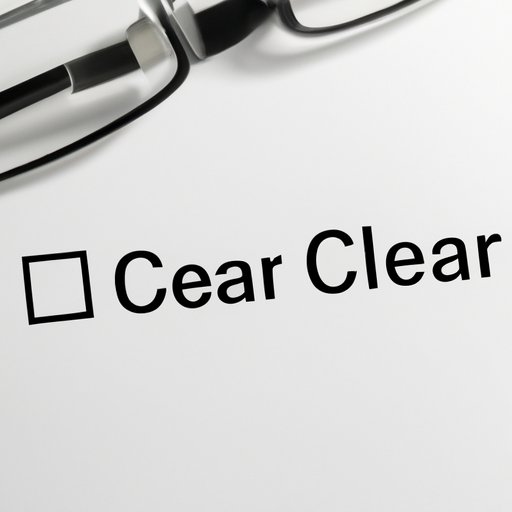Introduction
Cache is a temporary storage area that stores frequently accessed data to speed up devices’ performance. While cache can help reduce loading times and improve device performance, unmanaged or clogged cache can cause various issues that slow down your device, make apps crash, or expose data to potential security threats.
Step-by-Step Guide
To clear cache on a computer, open the web browser’s settings, go to the privacy or history tab, and clear browsing data. On Windows, click on the three-dot menu on the top right corner of the screen, select “Settings,” then “Privacy and security” and “Clear browsing data.” On Mac, select “Preferences” in the browser menu, click on “Privacy,” and select “Manage Website Data.”
To clear cache on Android devices, go to “Settings,” select “Storage,” then tap “Cached data,” and confirm the action. To clear cache on iOS devices, go to “Settings,” select the app you want to clear cache for, and tap “Offload App” or “Delete App.”
Illustrated with screenshots or videos, our step-by-step guide makes it easy to clear cache and optimize device performance on various devices and platforms.
Benefits of Clearing Cache
Clearing cache can significantly improve device performance by freeing up storage space and reducing loading times. It also enhances device security by removing potentially harmful or sensitive data stored in the cache. Clearing cache also optimizes app performance, prevents crashes, and ensures the smooth running of your device.
In particular, clearing cache on specific apps like web browsers, social media apps, or gaming apps can boost their performance, reduce errors, and enhance user experience. For example, clearing cache on a web browser can fix website loading issues and ensure smooth browsing, while clearing cache on gaming apps can enhance game performance, graphics, and audio quality.
To maximize the benefits of clearing cache, it’s essential to know how to clear various caches on different devices and platforms and how to optimize the cache settings of specific apps.
Frequently Asked Questions
Here are some common questions about clearing cache:
- What happens to my saved logins and passwords after clearing cache?
- Can clearing cache cause apps or data loss?
- Does clearing cache remove cookies?
- How often should I clear my cache?
- Do different devices or browsers have different cache cleanup methods?
Clearing cache does not delete your saved logins and passwords. However, your browser or app may log you out after clearing cache, so be prepared to re-enter your login credentials.
Clearing cache only removes temporary data, and should not cause any data or app loss. However, if you accidentally clear the wrong cache or do not save your work before clearing cache, you may lose data.
Yes, clearing cache removes cookies, which are also temporary files stored in your device’s cache. However, you can selectively remove cookies without clearing your cache.
It depends on your device usage and preferences. Generally, it’s recommended to clear cache once a month or whenever you experience device performance issues.
Yes, the cache cleanup methods vary across devices and browsers. Refer to our step-by-step guide for specific instructions on how to clear cache on different devices and platforms.
Clearing Cache for Specific Apps
Some apps may cause problems if the cache is not managed appropriately. Clearing cache for specific apps like web browsers, social media apps, or email clients can fix issues like slow loading times, app crashes, or storage overload.
Each app may have different cache settings that can be optimized for better performance and maintenance. For example, you can configure your browser to clear cache automatically after every use or set limits of how much cache data an app can store.
Troubleshooting Cache Issues
Clearing cache files can sometimes cause issues like login problems, missing data, or app crashes. When troubleshooting cache issues, try these tips:
- Check your internet connection and make sure you are using a stable network.
- Ensure that you have the latest app or system updates.
- Check your login credentials and try resetting your password if needed.
- Try clearing cache again or rebooting your device.
- Contact customer support or refer to online forums for further assistance.
Best Practices for Cache Management
To maintain proper cache management, follow these best practices:
- Set automatic cache cleanup schedules to ensure that your device’s cache is regularly cleared.
- Clear unnecessary cache files, especially those taking up significant storage space.
- Optimize the cache size for your device and specific apps to prevent potential performance issues or crashes.
- Periodically review your cache settings and update them for better performance and security.
Conclusion
Clearing cache is a simple but effective way to improve device performance, optimize app performance, and prevent common issues that slow down your device or compromise your data. Our step-by-step guide, tips for cache management, and troubleshooting techniques can help you maintain proper cache management and maximize your device’s performance.
Refer to our additional resources for further learning on cache management and optimization.
